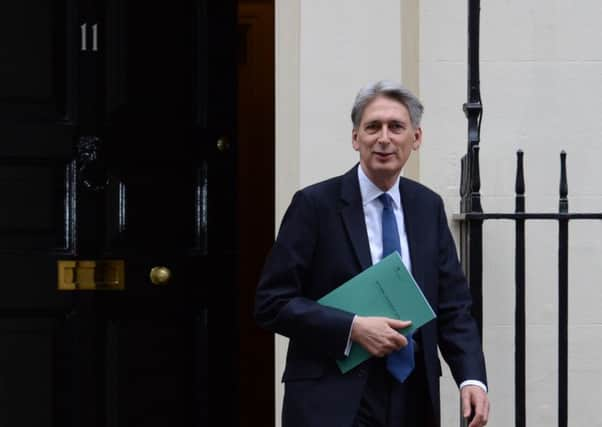Autumn Statement: As it happens
This article contains affiliate links. We may earn a small commission on items purchased through this article, but that does not affect our editorial judgement.


The Chancellor said his statement, which comes exactly five months after the Brexit vote, recognised there was “urgent” need to tackle long-term weaknesses in the British economy, “where every corner of this United Kingdom is part of our national success”.
He said the UK government would “maintain our commitment to fiscal discipline, while recognising the need for investment to drive productivity and fiscal head room to support the economy through the transition”.
Advertisement
Hide AdAdvertisement
Hide AdGrowth forecasts from the Office for Budget Responsibility (OBR) have been upgraded to 2.1 per cent in 2016, then downgraded from 2.2 per cent to 1.4 per cent in 2017.
“That’s slower, of course, than we would wish, but still equivalent to the IMF’s forecast for Germany, and higher than the forecast for growth in many of our European neighbours, including France and Italy,” Hammond said.
The Chancellor said the 23 June vote to leave the European Union will “change the course of Britain’s history” and “makes more urgent than ever the need to tackle our economy’s long-term weaknesses” including the productivity gap.
The OBR forecasts growth of 1.7 per cent in 2018, 2.1 per cent in 2019 and 2020 and 2 per cent in 2021. Its view is that the EU referendum result means potential growth over the period is 2.4 percentage points lower.
Meanwhile, OBR forecasts shows employment growing in every year - another 500,000 over the period – but Hammond confirmed he is no longer seeking a budget surplus in 2019/20, saying he is committed to returning public finances to balance “as soon as practicable”.
A new draft charter for budget responsibility has three fiscal rules – return public finances to balance “as early as possible in the next parliament”, with cyclically adjusted borrowing below 2 per cent by end of this parliament; public sector net debt falling as a share of GDP by end of parliament; and welfare spending within a cap. Hammond said the government has no plans for further welfare savings in this parliament.
Public sector net borrowing (PSNB) is expected to fall from 4 per cent of GDP last year to 3.5 per cent this year, continuing to fall and reaching 0.7 per cent in 2021/22.
Cyclically adjusted PSNB is set to be 0.8 per cent of GDP in 2020/21, while debt is expected to rise from 84.2 per cent of GDP last year to 87.3 per cent this year, peaking at 90.2 per cent in 2017/18 then falling to 89.7 per cent in 2018/19.
